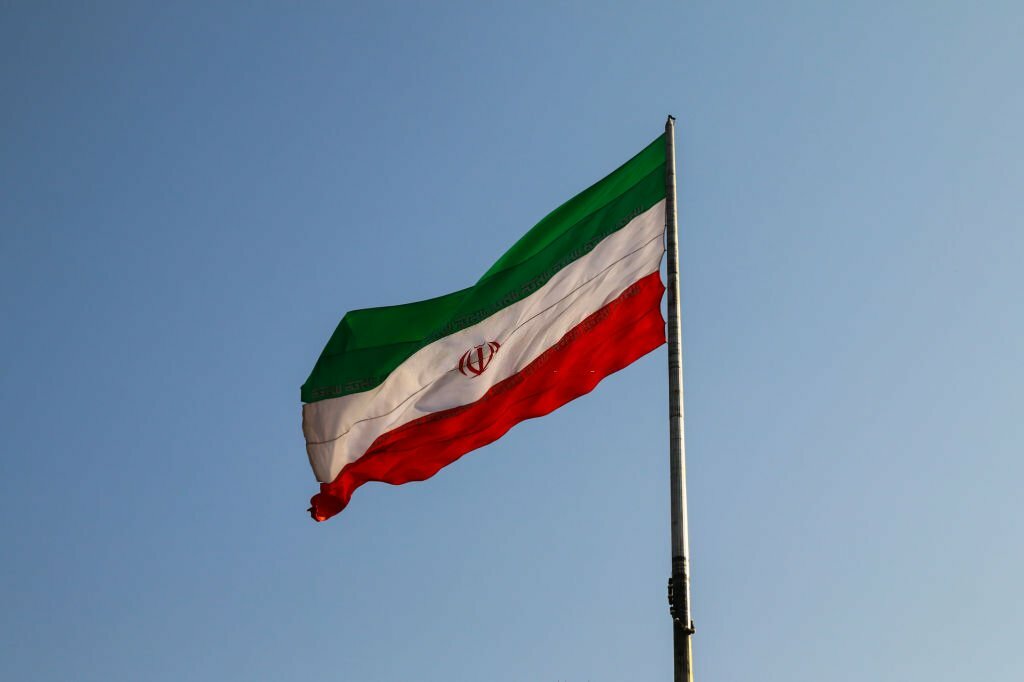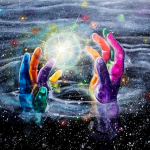The Iran Flag – A Symbol of History, Unity, and Identity
Flags have a unique ability to capture the essence of a nation’s history, culture, and aspirations. Iran’s flag, known as the “Tricolor,” is no exception. This flag’s distinct design and rich symbolism weave a compelling narrative, telling the tale of a nation’s struggle for independence, its deep-rooted cultural heritage, and its unyielding commitment to a brighter future. In this extended exploration, we will delve deeper into the Iran flag, meticulously dissecting its design, symbolism, historical significance, and its continuing role as a symbol of Iranian national identity.
The Iran Flag’s Design
The Iran flag, officially named the “Tricolor,” boasts a simple yet powerful design comprising three horizontal stripes: green, white, and red. The national emblem of Iran, a stylized coat of arms, takes center stage within the white stripe. Let’s take a closer look at each design element:
1. Green Stripe: The uppermost stripe is vibrant green, symbolizing growth, happiness, unity, and the vitality of the Iranian people. The green color has deep roots in Persian culture, representing the essence of nature and rebirth, aligning with the nation’s agricultural traditions and its resilience against adversities.
2. White Stripe: The middle stripe is pristine white, symbolizing peace, honesty, and purity. This color reflects not only the nation’s rich historical and cultural heritage but also underscores the paramount importance of peace and unity within the nation.
3. Red Stripe: The lowermost stripe is a bold red, signifying courage, fire, and determination. It serves as a poignant reminder of the sacrifices made by the Iranian people throughout their history to preserve their independence and protect their homeland.
4. The National Emblem: Prominently displayed in the heart of the white stripe, the national emblem is a highly stylized representation of Iran’s rich heritage. It comprises four essential elements: a sword, emblematic of bravery and strength; a book, symbolizing knowledge and wisdom; a ring with the words “Allah-o Akbar” (God is the Greatest) inscribed in elegant Kufic script, representing the Islamic faith; and a rising sun, signifying the dawn of a new era and the promise of a brighter future.
The Iranian Flag’s Historical Significance
The Iranian flag’s design and colors are far from arbitrary; they carry profound historical and cultural significance. The Tricolor flag’s origin can be traced back to the early 20th century during Iran’s Constitutional Revolution (1905-1911), but it underwent a transformation during the Islamic Revolution in 1979, acquiring additional layers of meaning.
1. Constitutional Revolution (1905-1911): During this period, Iranians fervently sought to establish a constitutional monarchy and curtail the power of the Qajar monarchy. The green, white, and red stripes drew inspiration from the French Tricolor, symbolizing the principles of liberty, equality, and fraternity. The adoption of these colors in the Iran flag symbolized the nation’s yearning for political and social transformation, mirroring the sentiments of other revolutionary movements worldwide.
2. Islamic Revolution (1979): Following the overthrow of the Pahlavi monarchy in 1979, Iran witnessed a profound transformation. The Iranian flag underwent modifications to incorporate the national emblem in the heart of the white stripe, symbolizing the fusion of Islamic principles with the nation’s identity. The ideals of the Islamic Revolution found expression in the new flag, creating a symbol that embodies national pride and religious commitment.
The Symbolism of the Iran Flag
The Iran flag is replete with symbolism, reflecting the nation’s history, culture, and aspirations. Each element in the flag’s design carries its own unique significance:
1. Green Stripe: The green stripe, with its symbolism of growth, happiness, and unity, epitomizes the importance of nature and renewal in Persian culture. It resonates with the nation’s agricultural traditions, emphasizing resilience in the face of challenges.
2. White Stripe: The white stripe stands as a representation of peace, honesty, and purity. It embodies the nation’s rich history and emphasizes the yearning for unity and harmony among its diverse population.
3. Red Stripe: The red stripe signifies courage, fire, and determination. It serves as a poignant reminder of the sacrifices made by Iranians throughout their history to safeguard their homeland and preserve their independence.
4. The National Emblem: The national emblem in the center of the flag serves as a unifying force, irrespective of the diverse beliefs and backgrounds of the Iranian populace. The sword symbolizes bravery and strength, the book represents knowledge and wisdom, the ring with the words “Allah-o Akbar” underscores the nation’s Islamic faith, and the rising sun symbolizes hope and the promise of a brighter future.
The Iran Flag’s Evolution
The history of the Iran flag is a tale of transformation and adaptation that mirrors the nation’s changing political and cultural landscape:
1. Early Flags: Prior to the adoption of the Tricolor, Iran utilized various flags, often reflecting the emblems and symbols of the ruling dynasty. However, these flags did not represent the broader aspirations of the Iranian people.
2. Constitutional Revolution Flag: The Iranian Tricolor emerged during the Constitutional Revolution, influenced by revolutionary movements worldwide. It was a declaration of Iran’s desire for political reform and its commitment to principles of liberty, equality, and fraternity.
3. Pahlavi Era Flag: During the reign of the Pahlavi dynasty, Iran adopted a new flag in 1925, featuring a lion and sun symbol representing the Shah’s authority. However, this flag was replaced after the Islamic Revolution.
4. The Islamic Republic Flag: In 1980, following the Islamic Revolution, the current Iranian flag was established. The national emblem at its heart symbolizes the fusion of Islamic principles with the nation’s identity, reflecting a new chapter in Iran’s history.
The Iranian Flag’s Role in Modern Iran
The Iranian flag plays a pivotal role in modern Iran, serving as a symbol of unity that transcends political and ideological differences. Here are a few ways in which it continues to influence the nation’s identity and unity:
1. National Identity: The Iran flag embodies the nation’s identity and unites its diverse population. It represents the rich cultural and historical heritage that Iranians share, regardless of their personal beliefs.
2. Patriotism: The flag instills a sense of patriotism and pride among Iranians, encouraging them to take ownership of their nation’s history and future.
3. International Symbol: The Tricolor is recognized worldwide as the symbol of Iran, representing the country’s traditions, culture, and principles. It is displayed on the world stage during diplomatic events and international competitions.
4. Unity: The flag serves as a symbol of unity, fostering a shared sense of purpose and commitment among Iranians, transcending political or religious affiliations.
5. Historical Continuity: The Iran flag links the nation’s present to its past, reminding its citizens of their forebears’ sacrifices and the enduring spirit that has allowed Iran to overcome historical challenges.
The Iranian Flag in National Celebrations
Iranian national celebrations and events are imbued with the presence of the Tricolor, emphasizing the flag’s role in these important moments:
1. Nowruz: The Iranian New Year, or Nowruz, is celebrated with great fervor, and the Iranian flag is prominently displayed during these festivities. The green stripe represents the rebirth associated with the arrival of spring.
2. National Day: On Iran’s National Day, the flag takes center stage in parades, ceremonies, and other public events. It serves as a reminder of the nation’s history and the continued quest for a brighter future.
3. Revolution Day: The anniversary of the Islamic Revolution is another crucial event marked by the prominent display of the Iranian flag. It symbolizes the ideals and aspirations of the revolution.
4. Sports Events: In international sports competitions, the Iranian flag is a source of pride for the nation. Athletes and fans alike display the Tricolor, cheering for their representatives on the global stage.
The Iranian Flag in Contemporary Art and Culture
The Iranian flag has a strong presence in contemporary art and culture, reflecting the enduring significance of this national symbol:
1. Visual Arts: Iranian artists often incorporate the flag’s colors and motifs into their work. Whether in painting, sculpture, or digital media, the Iranian flag serves as a recurring theme, conveying messages of identity and unity.
2. Fashion and Design: The Tricolor’s color palette and symbolism inspire fashion designers and architects. From clothing and accessories to buildings and public spaces, the flag’s design elements find expression in various forms of design.
3. Music and Literature: Iranian musicians and writers draw on the symbolism of the flag to convey themes of national pride, history, and resilience. Lyrics and prose often reference the flag as a symbol of the nation’s strength.
4. Cinema: Iranian filmmakers incorporate the flag into their work to emphasize themes related to national identity, particularly in historical and political films.
The Iranian Flag’s Enduring Legacy
The Iranian flag’s design and symbolism make it a powerful emblem of history, culture, and aspiration. The Tricolor flag encapsulates the nation’s journey from the Constitutional Revolution to the Islamic Revolution, reflecting a commitment to progress and unity. However, it is crucial to note that the Iran flag is more than just colors and symbols; it is a reflection of the heart and soul of a nation, standing as a testament to the enduring spirit of the Iranian people.
As Iran continues to navigate its path through the complexities of the modern world, the Iran flag remains a symbol of unity, resilience, and pride. It represents not only the nation’s past but also its unwavering commitment to building a better future. In a world marked by diversity and change, the Iran flag stands as a timeless emblem, an anchor for the Iranian people, a reminder of their heritage, and a symbol of their dreams. It embodies their history, culture, and their enduring quest for a brighter tomorrow.











